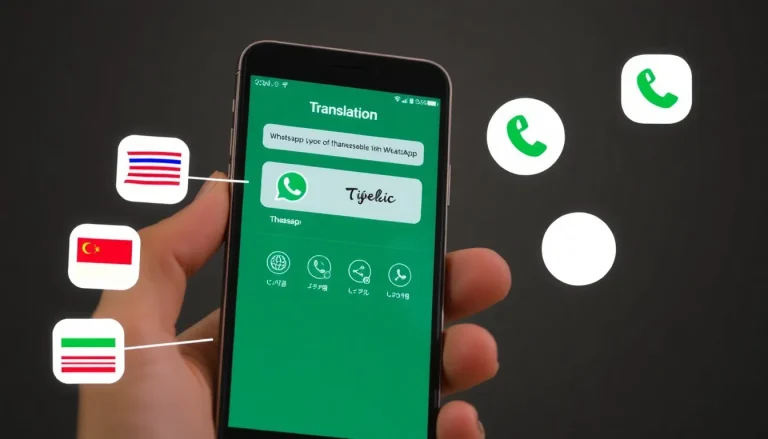Understanding the Importance of an AI Checker
In our rapidly evolving digital landscape, the proliferation of artificial intelligence (AI) technologies has transformed many aspects of life, including how we create and consume content. As AI tools become more sophisticated, distinguishing between human-generated and AI-generated content becomes increasingly challenging. This is where an ai checker plays a crucial role. This article delves into the importance of AI checkers, their operational mechanisms, and practical applications in various fields.
What is an AI Checker?
An AI checker is a software tool designed to analyze written text to determine whether it originates from an artificial intelligence model or is authored by a human. AI checkers utilize various algorithms and methodologies to evaluate the nuances and structures of the text, providing insights into its authorship. These tools have become essential in fields such as education, journalism, and content marketing, where authenticity and originality are paramount.
Why Use an AI Checker for Content?
AI checkers serve numerous purposes that can enhance the integrity of content:
- Maintaining Academic Integrity: Educational institutions increasingly utilize AI checkers to ensure that students submit original work, combating issues like plagiarism and AI-generated essays.
- Content Authenticity: Businesses and digital marketers need assurance that the content they publish meets authenticity standards, which protect brand reputation and trust.
- Quality Control: Editors and proofreaders rely on AI checkers to refine their workflows, ensuring written material meets high standards.
- SEO Optimization: Identifying AI-generated content can help businesses understand how search engines evaluate quality, potentially improving their SEO strategies.
Challenges in AI Detection
Despite their growing importance, AI detection tools also face several challenges:
- Adaptability of AI Models: The continuous improvement of AI writing models means that detection tools must evolve to accurately identify newer versions of AI-generated content.
- False Positives: AI checkers may mistakenly flag human-written content as AI-generated, which can lead to misunderstandings and misattributions.
- Contextual Understanding: Many AI checkers struggle with comprehending context, which is crucial for accurately assessing the origin of text, especially in nuanced subjects.
How AI Checkers Work
The effectiveness of AI checkers largely depends on their underlying technologies. Understanding the mechanics can help users select the right tool for their needs.
Technical Mechanisms Behind AI Checkers
AI checkers employ a variety of technical mechanisms to analyze text. Common methods include:
- Statistical Analysis: This involves analyzing grammatical structures, vocabulary usage, and sentence length to identify typical patterns associated with AI-generated text.
- Machine Learning: Using trained models, AI checkers can recognize the unique signatures of content created by different AI models, improving detection accuracy over time.
- Natural Language Processing (NLP): Advanced AI checkers leverage NLP techniques to deeply understand language semantics, which helps differentiate between human and machine-generated content.
Common Algorithms Used
Several algorithms play a pivotal role in the functioning of AI detection tools:
- Neural Networks: These are commonly used in machine learning to improve text classification and detection accuracy.
- Support Vector Machines (SVM): SVMs are effective for binary classification problems and can be utilized to distinguish AI-generated text from human-written text.
- Random Forests: This ensemble learning technique aggregates multiple decision tree outputs to enhance prediction accuracy and reduce overfitting.
Evaluating Effectiveness
When considering an AI checker, evaluating its effectiveness is crucial. Key performance metrics include:
- Accuracy Rate: The percentage of correct predictions relative to total assessments made by the checker.
- False Positive Rate: The rate of mistakenly flagged human-generated content as AI-generated.
- Speed of Analysis: The time taken to analyze and return results, which is vital for users requiring rapid feedback.
Choosing the Right AI Checker
With numerous AI checkers available, selecting the right tool requires careful consideration of several factors to meet specific user needs.
Key Features to Look For
When evaluating different AI checkers, look for the following features:
- User-Friendly Interface: An intuitive interface enhances usability, especially for non-technical users.
- Multi-Language Support: If working in a multilingual context, it is essential to choose a checker that supports various languages.
- Integration Capabilities: The ability to integrate with tools commonly used in content creation or academic writing can streamline workflows.
- Cost-Effectiveness: Analyze different pricing models and assess them against the value provided by the tool.
Comparative Analysis of Top AI Checkers
Several AI checkers are leading the market with distinct features:
- ZeroGPT: Comprehensive detection capabilities, strong accuracy for ChatGPT, GPT-4, and Gemini. It also provides tools for additional functions such as plagiarism checking.
- QuillBot AI Detector: Known for its user-friendly design and fast analysis, making it suitable for educators and content creators alike.
- Grammarly: While primarily a grammar tool, Grammarly’s AI detection offers decent capabilities, leveraging its extensive database of text patterns.
- GPTZero: Highly regarded for its speed and accuracy, especially in academic settings, offering extensive AI detection functionalities.
User Reviews and Testimonials
User feedback provides insights into the effectiveness and performance of different AI checkers:
- Positive Responses: Users often praise tools that deliver accurate results, efficiency, and ease of use.
- Negative Feedback: Issues typically revolve around false positives or inadequate support for non-English languages.
- Case Study Examples: For example, educators have reported success in maintaining academic integrity by utilizing AI detectors, reinforcing their value in educational settings.
Best Practices for Utilizing an AI Checker
Maximizing the benefits of AI checkers involves strategic integration into existing workflows and processes.
Integrating into Your Workflow
To effectively utilize an AI checker, consider these integration strategies:
- Pre-Publishing Checks: Always run AI-generated content through a checker before publishing to ensure originality.
- Regular Training Sessions: Conduct workshops for teams focused on understanding the importance of content integrity and the correct use of AI checkers.
Case Studies of Successful AI Checker Implementations
Several organizations have successfully implemented AI checkers:
- University of XYZ: After instituting an AI checker across curricula, they saw a significant decrease in plagiarism incidents.
- Content Marketing Agency ABC: By integrating a robust AI checker into their editorial process, the agency maintained high standards and minimized reputational risks.
Maximizing Detection Accuracy
Enhancing detection accuracy requires constant engagement with tool updates and methodologies:
- User Feedback: Regularly provide feedback to developers for enhancement based on user experiences and evolving AI capabilities.
- Staying Informed: Keep abreast of trends in AI development and detection technologies to ensure tools remain effective.
Future of AI Checkers in Content Verification
The future of AI checkers looks promising, with emerging trends anticipated to shape their evolution.
Emerging Trends and Technologies
Some trends to watch for include:
- Enhanced AI Learning: Future AI checkers will likely incorporate more advanced machine learning techniques, enabling deeper learning from a wider range of texts.
- Real-Time Detection: Tools may evolve to provide real-time detection capabilities, allowing users to check the authenticity of text as it is being created.
The Role of AI Checkers in Education and Business
AI checkers’ roles will expand significantly:
- Academic Institutions: Educational systems will increasingly adopt AI checkers as part of their integrity measures.
- Corporate Accountability: Businesses will utilize these tools to uphold ethical standards, particularly in marketing and public relations.
Preparing for Evolving AI Detection Needs
Organizations must prepare for the changing landscape by:
- Investing in Continuous Education: Regularly training staff on the latest AI developments and detection technologies.
- Building a Culture of Transparency: Encouraging open discussions around AI usage and maintaining honesty in content creation.








